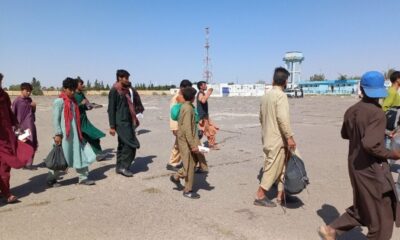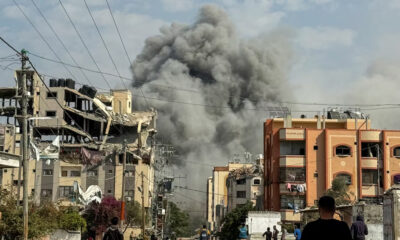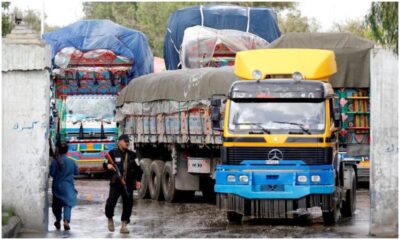Latest News
Sharp rise in Afghan civilian casualties after start of peace talks: UN
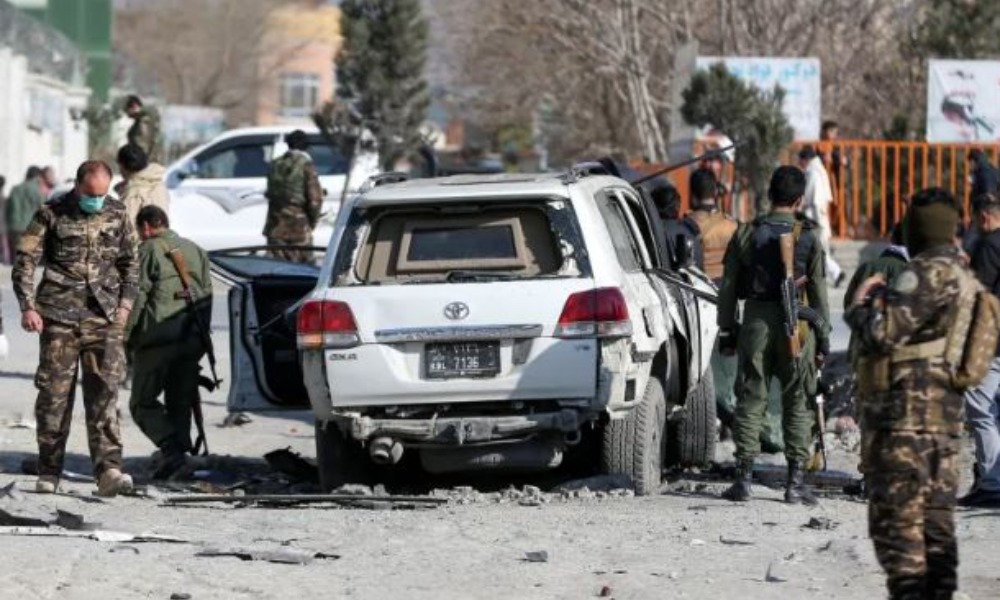
There has been an increase in civilians killed and injured in Afghanistan following the start of peace talks in September, UNAMA said Tuesday.
According to the UN Assistance Mission in Afghanistan’s (UNAMA) latest report, despite the rise in casualties since September the overall numbers for 2020 were down due to lower civilian casualty rates prior to the start of talks.
The Taliban meanwhile reacted to the report and said: ”We reject such incomplete reports based on incorrect information.”
The Afghanistan Protection of Civilians in Armed Conflict Annual Report 2020 documents the “appalling level of harm inflicted on civilians and traces the disturbing spike in violence against them in the last quarter of the year”, the report read.
“2020 could have been the year of peace in Afghanistan. Instead, thousands of Afghan civilians perished due to the conflict,” said Deborah Lyons, the Secretary-General’s Special Representative for Afghanistan and head of UNAMA.
“This important report has the overriding objective of providing the parties responsible with the facts, and recommendations, so they take immediate and concrete steps to protect civilians. I urge them not to squander a single day in taking the urgent steps to avoid more suffering.”
“Ultimately, the best way to protect civilians is to establish a humanitarian ceasefire,” said Lyons.
“Parties refusing to consider a ceasefire must recognize the devastating consequences of such a posture on the lives of Afghan civilians.”
For a seventh consecutive year, UNAMA documented more than 3,000 civilians killed in a single year, with Afghanistan remaining among the deadliest places in the world to be a civilian.
A distressing feature of the conflict remains the shocking and disproportionate impact on Afghan women and children. They make up 43 percent of all civilian casualties: child casualties numbered 2,619 (30 percent) and women 1,146 (13 percent).
More women were killed in the conflict in 2020 than any year since UNAMA began systematic documentation in 2009. In total 1,150 women and children were killed (390 women and 760 children).
The overall number of civilian casualties in 2020 of 8,820 (3,035 killed and 5,785 injured) fell below 10,000 for the first time since 2013 and was 15 percent down on 2019.
While the reduced numbers are welcome, documentation shows that the lower levels of overall harm were partially offset by increases from certain tactics, as well as from an uncharacteristic increase in civilian harm in the last quarter of the year, the report read.
Afghanistan Peace Negotiations, that began between representatives of the Islamic Republic of Afghanistan and the Taliban in Qatar on 12 September, failed to alleviate the scale of civilian harm, a key indicator of violence levels. Instead, there was an escalation of violence with disturbing trends and consequences.
For the first time since it began systematic documentation in 2009, UNAMA documented an increase in the number of civilian casualties recorded in the fourth quarter compared with the third quarter. In addition, this period marked a 45 percent increase in civilian casualties in comparison to the same three months in 2019, especially from the use of improvised explosive devices (IEDs) and targeted killings.
In October, civilian casualties were the highest of any month in 2020, and the following month UNAMA documented the highest number of civilian casualties of any November since records began in 2009.
Alongside the overall increase in violence, as the year ended, the population was confronted with a spate of targeted killings, referred to by many as “assassinations”, including civilians from the media, civil society, judiciary and the civilian government administration, as well as family members of combatants.
The United Nations Secretary-General and the Security Council have consistently called for a global humanitarian ceasefire as the best way to protect civilians. Without any end to the conflict, parties need to prevent and mitigate civilian casualties, including through adhering to the report’s recommendations.
The report also reminds the parties that attacks deliberately targeting civilians or civilian objects are serious violations of international humanitarian law that may amount to war crimes.
Anti-Government Elements (AGEs) in 2020 caused the majority of civilian casualties (62 percent), totalling 5,459 casualties – 1,885 killed and 3,574 injured with the Taliban responsible for most of these casualties (45 percent of the total) and Islamic State in the Levant-Khorasan Province (ISIL-KP) responsible for 8 percent.
Pro-Government Forces (PGF) caused a quarter of all civilian casualties, totalling 2,231 (841 killed and 1,390 injured), a decrease of 24 percent from 2019, with the Afghan national security forces causing most of these (22 percent of the total).
The overall reduction in civilian casualties in 2020 was due to factors such as fewer suicide attacks by AGEs causing large numbers of civilian casualties, especially in urban areas, and a stark drop in casualties attributed to international military forces.
While there was an increase in the number of civilian casualties that were unclaimed by any party and for which UNAMA could not attribute responsibility, the report finds that the Taliban caused 19 percent fewer civilian casualties than in 2019 and the ISIL-KP 45 percent fewer.
Strikingly, international military forces in 2020 were responsible for their lowest recorded number of civilian casualties since UNAMA began documentation in 2009. In 2020, this figure was 120 civilian casualties, down from 786 in 2019, a decrease of 85 percent.
A matter of profound concern remains the continuation of attacks deliberately targeting civilians by AGEs. This includes attacks targeting members of the judiciary, media and civil society, as well as religious minorities, especially the Shi’a Muslim population, most of whom also belong to the Hazara ethnic group, and the Sikh population.
Indiscriminate attacks, such as the use of pressure-plate IEDs by the Taliban also remain of concern. These devices are victim-activated and cannot be directed towards a specific target. Similarly, concerns remain about vehicle-borne IEDs that cause many civilian casualties due to the large explosive power used, even if they are not directed against civilians or civilian objects.
Also of grave concern is the use of explosive weapons in civilian populated areas, especially the use of indirect fire, such as artillery shells, mortars and rockets during ground engagements, but also the use of airstrikes and IEDs in civilian populated areas.
Ground engagements were the leading cause of civilian casualties in 2020 (36 percent), a slight increase compared with 2019. They were followed by AGE suicide and non-suicide attacks using improvised explosive devices (34.5 percent), a 30 percent decrease. AGE targeted killings (14 percent) increased by 45 percent; and PGF airstrikes (8 percent) were down 34 percent.
Through post incident interviews with victims and their family members, UNAMA identified that more needs to be done by parties in acknowledging and taking responsibility for the harm they caused. The majority of victims interviewed continued to require financial assistance, protection, medical care, and psychosocial support in the aftermath of an incident. Many knew little if anything about whether an investigation was being undertaken, and sought justice, information and/or an apology by those responsible.
“The ever-growing number of women, men, boys and girls affected by the conflict need to be remembered. They have lost loved ones, suffered injuries, have had to leave their homes and face economic and social difficulties. In too many cases they feel abandoned,” said Fiona Frazer, UNAMA’s Human Rights chief.
“They ask that their grief be recognised, their voices heard and an end to the conflict. 2020 was the year when Afghans dared to hope for peace, instead they found themselves facing more violence.”
Latest News
Afghanistan exported more than 2,500 tons of pine nuts in 1402
Afghan pine nut is mostly exported to China, India, Turkey and the United Arab Emirates.

The Ministry of Industry and Commerce says that in the past solar year (1402) more than 2,500 tons of pine nuts worth $27 million were exported to neighboring countries and beyond.
Afghan pine nut is mostly exported to China, India, Turkey and the United Arab Emirates.
“The total weight of black pine nut exports during 1402 was 2,523 tons and the value was $27 million, mostly to China, India, Pakistan, the United Arab Emirates, Saudi Arabia, Qatar, the United States, Britain, Australia, the Netherlands, and other countries,” said Abdul Salam Javad Akhundzada, the spokesman of the Ministry of Industry and Commerce.
Officials in the Ministry of Agriculture, Irrigation and Livestock say that since last year, pine nut production has increased in the country and they have also expanded artificial forests to harvest more pine nuts.
“In order to revive pine nut forests, according to last year's development budget, pine trees have been planted on approximately 1,500 hectares of land.
There used to be pine trees on these lands, but they were cut down or destroyed in a fire,” said Misbahuddin Mustain, the spokesperson of the Ministries of Agriculture, Irrigation and Livestock.
Experts say that currently China buys most of Afghanistan's pint nuts, but the government must find new markets so that it can be sold at a better price.
Latest News
IEA says deportation of Afghan migrants from neighboring countries has intensified

A committee of the High Commission for Addressing the Problems of Migrants said the process of forced expulsion of Afghan migrants from neighboring countries has intensified.
However, members of the committee emphasized, in their meeting with the Prime Minister's administrative deputy, that they have managed the resettlement of the returnees well in cooperation with relevant institutions.
In the meeting, Abdul Salam Hanafi, the administrative deputy prime minister, said that as winter approaches, committees should seek to ensure that the returnees will not face problems.
Experts say that the refugee hosting countries should treat Afghan migrants according to international laws, and take into account the current conditions of the country.
“To reduce immigration and increase economic stability, creating employment opportunities, increasing investment, giving various types of loans to people and issuing securities can be effective,” said Asifa Stanikzai, a migration expert.
Iranian officials have said that they deport 3,000 Afghan immigrants from the country every day and they plan to deport two million Afghan immigrants by the end of this year.
Forced deportation of Afghan migrants from Iran and Pakistan has been a serious challenge in the last three years, but according to experts, the Islamic Emirate has been able to manage the process to some extent.
Latest News
Iran executes 13 Afghans in October, 49 in total since January
Last month, Iran carried out at least 166 executions in October alone bringing the total in the first 10 months of 2024 to at least 651

Iran Human Rights reported this weekend that in the first 10 months of 2024, Iran has executed 49 Afghan nationals, 13 of whom were executed in October alone.
According to IHR, the number of executions of Afghan nationals has increased in the past three years.
In 2022, 16 Afghan nationals, including a juvenile offender and a woman, were executed.
In 2023, this number increased to 25.
This year, the trend has accelerated further.
IHR warned that Iran may take advantage of the rising conflict between Iran and Israel to escalate the number of executions in the coming months.
Last month, Iran carried out at least 166 executions in October alone bringing the total in the first 10 months of 2024 to at least 651.
This marks the highest number of executions recorded in a single month since Iran Human Rights began documenting executions in 2007.
Among those executed were the 13 Afghan nationals, six women, and an Iranian-German citizen.
The organization has called on the international community, media, and civil society to closely monitor and respond to what they say is an “alarming rise in executions”.
IHR also stated that since the presidential election and the recent escalation in Iran-Israel tensions, the number of executions has surged, with at least 353 people having been executed between August and October - since President Massoud Pezeshkian took office.
The Islamic Emirate of Afghanistan has not yet commented on the number of Afghan nationals executed.
The Iranian government does not disclose the number of Afghans it executes or the reasons behind most cases.
However, it is widely believed that a significant portion of these executions are related to drug charges.
Human rights organizations have criticized the Iranian government for conducting such executions, arguing that these actions violate international laws and the right to life.
Amnesty International says that the death penalty, without exception, constitutes a violation of the right to life as articulated in the Universal Declaration of Human Rights.
-

 Business5 days ago
Business5 days agoChina resumes direct rail trade with Afghanistan
-
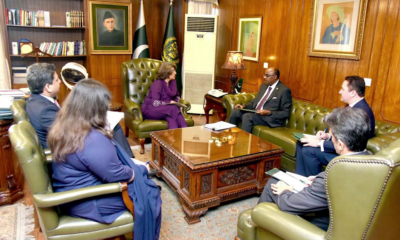
 Latest News5 days ago
Latest News5 days agoOIC special envoy meets with Pakistani officials for talks on Afghanistan
-

 Business4 days ago
Business4 days agoPrivate sectors of Afghanistan, Kazakhstan sign contracts worth $100 million
-

 Sport4 days ago
Sport4 days agoRashid Khan retained by Gujrat Titans ahead of IPL 2025 auction
-
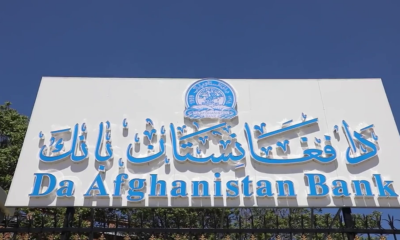
 Latest News4 days ago
Latest News4 days agoDAB plans to set up electronic payments in Afghanistan
-
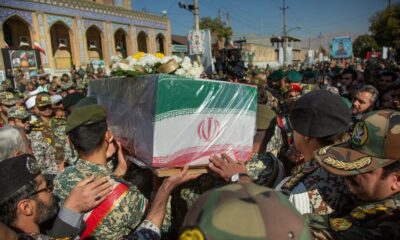
 Regional4 days ago
Regional4 days agoIran preparing strike on Israel from Iraqi territory within days, Axios reports
-

 Regional4 days ago
Regional4 days agoSeven killed, dozens injured in blast in Pakistan’s Balochistan province
-

 Sport2 days ago
Sport2 days agoAfghanistan to tour Zimbabwe for all-format series






